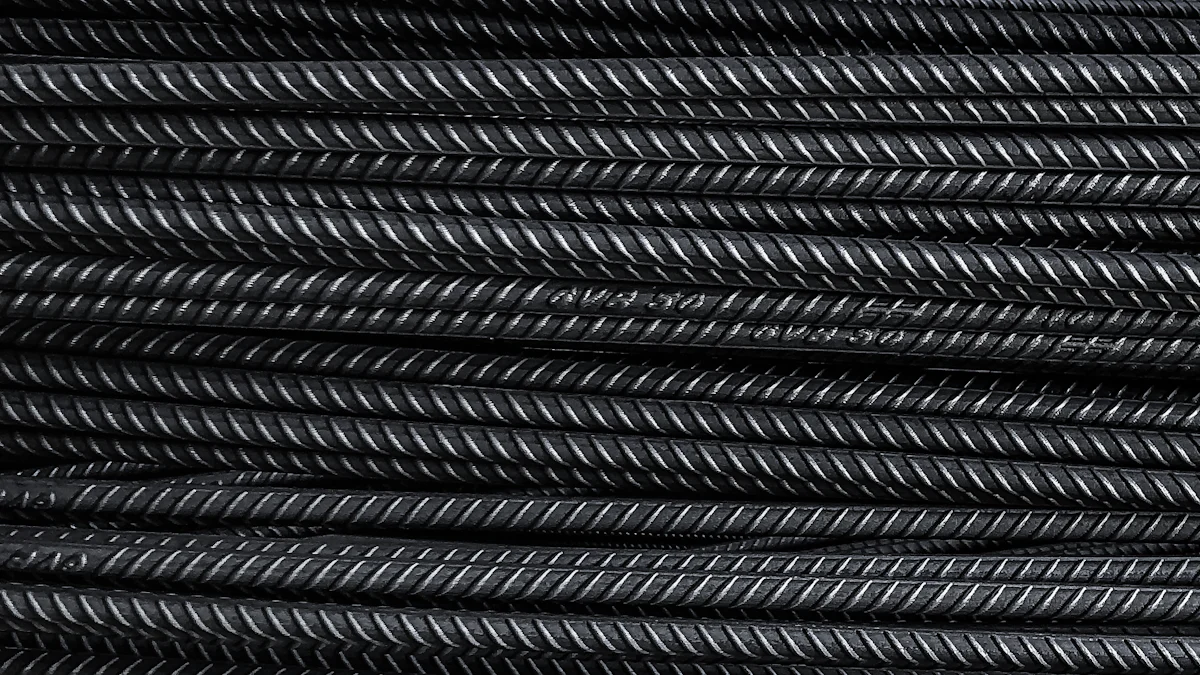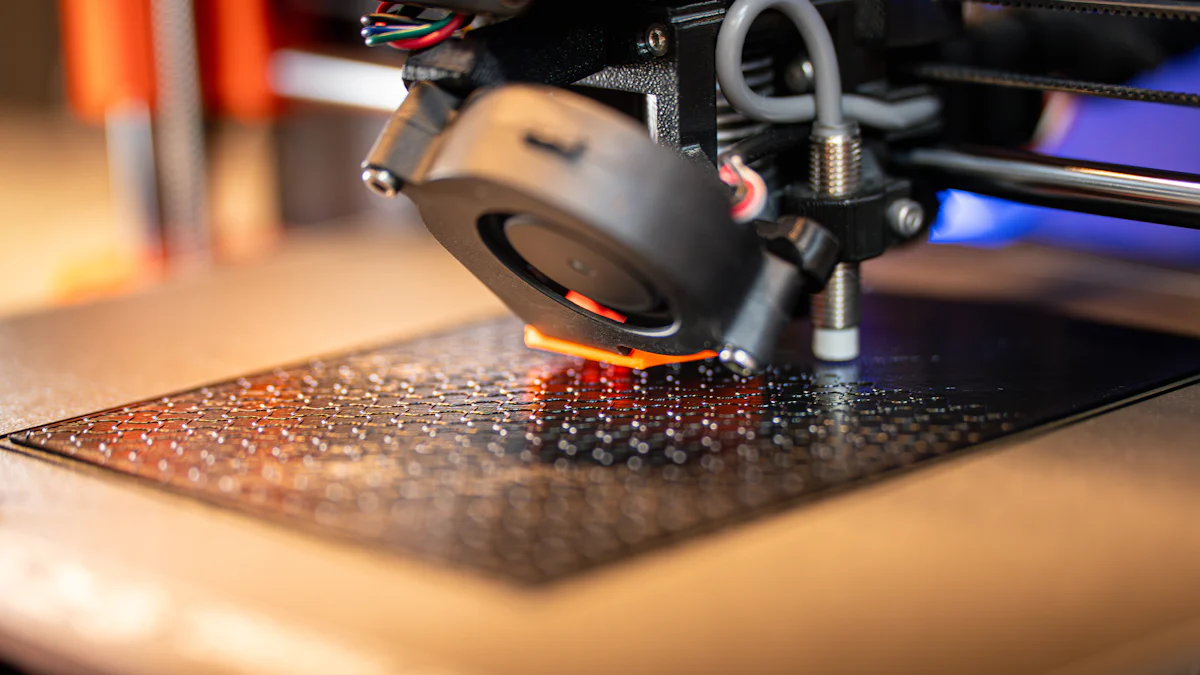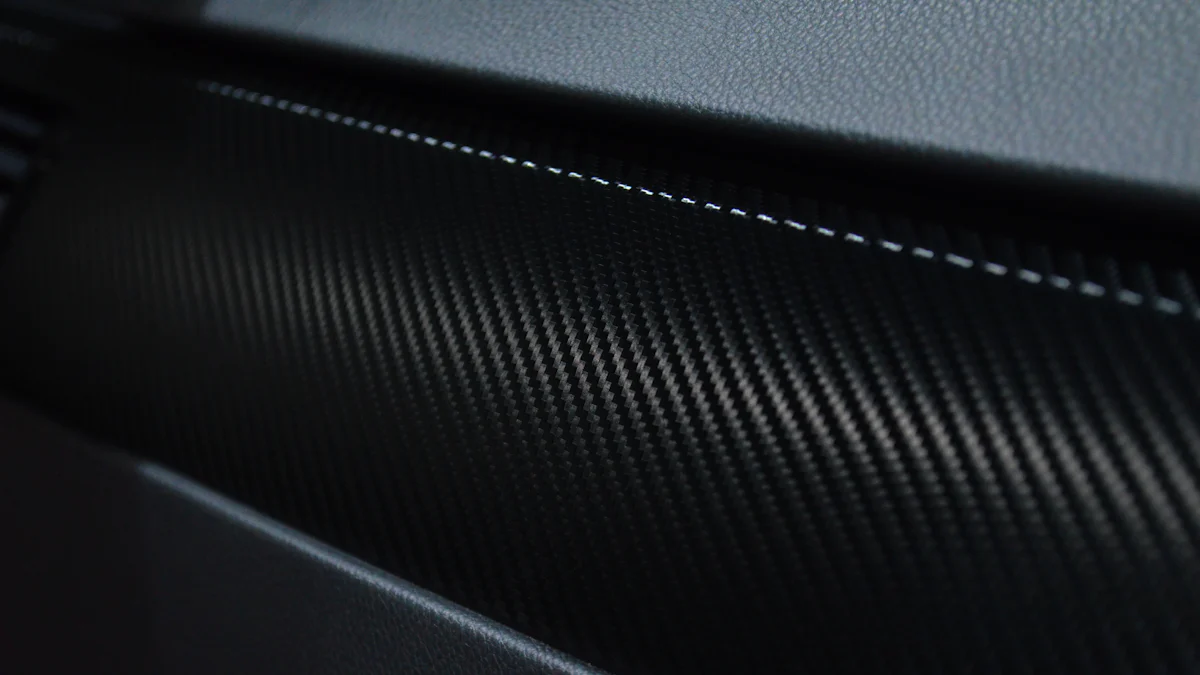
Reinforced carbon carbon composite is a remarkable material known for its exceptional strength and durability. By integrating carbon fibers, which are five times stronger and twice as stiff as steel, with a carbon matrix, it forms a carbon fiber reinforced carbon composite capable of enduring extreme conditions. This advanced material offers outstanding heat resistance, making it a preferred choice for aerospace and cutting-edge engineering applications. When comparing carbon composite vs carbon fiber, the reinforced carbon carbon composite stands out for its superior strength-to-weight ratio and unique properties. Gaining insight into what is carbon carbon composite highlights its indispensable role in industries demanding precision and resilience, where performance justifies the reinforced carbon carbon price.
Key Takeaways
- Reinforced carbon carbon composite combines carbon fibers with a carbon matrix, offering exceptional strength and heat resistance, making it ideal for aerospace and advanced engineering applications.
- The preparation of carbon fibers is crucial; selecting the right type and arranging them properly enhances the composite’s performance under stress and extreme conditions.
- Impregnating carbon fibers with resin is a key step that ensures a strong bond and uniform structure, setting the stage for the carbonization process that transforms the resin into a robust carbon matrix.
- Densification through repeated cycles of impregnation and carbonization increases the composite’s density and strength, allowing it to withstand high temperatures and mechanical stress.
- Final machining and surface treatments enhance the composite’s shape and protect it from environmental factors, ensuring durability and reliability in demanding applications.
- Understanding the meticulous manufacturing process of reinforced carbon carbon composite highlights its indispensable role in industries where performance and precision are critical.
Step 1: Preparing the Carbon Fibers

The foundation of a reinforced carbon carbon composite lies in its carbon fibers. These fibers serve as the backbone, providing the material with its exceptional strength and stiffness. Preparing these fibers involves careful selection and precise arrangement to ensure the final composite meets the desired performance standards.
Selecting and Arranging Carbon Fibers
Types of carbon fibers used in reinforced carbon carbon composite
Carbon fibers come in various forms, each offering unique properties. High-strength fibers, often used in aerospace applications, deliver superior tensile strength. On the other hand, high-modulus fibers excel in stiffness, making them ideal for applications requiring rigidity. Manufacturers often choose fibers based on the specific demands of the composite, such as heat resistance or mechanical performance.
Carbon fibers are typically combined with other materials to enhance their properties. For instance, when mixed with graphite, they create a composite capable of withstanding extreme temperatures. This combination is particularly valuable in industries like aerospace, where materials must endure harsh environments without compromising structural integrity.
Methods for arranging fibers to ensure structural integrity
Arranging carbon fibers correctly is crucial for achieving optimal performance. Manufacturers use several methods to align the fibers, ensuring the composite can handle stress effectively. Common techniques include:
- Unidirectional alignment: Fibers are arranged in a single direction to maximize strength along that axis. This method is often used in applications requiring high tensile strength.
- Weaving or braiding: Fibers are interlaced to create a fabric-like structure. This approach enhances durability and provides multi-directional strength.
- Layering: Multiple layers of fibers are stacked in different orientations. This technique balances strength and stiffness across all directions.
Each arrangement method contributes to the composite’s overall performance. For example, unidirectional alignment offers exceptional strength in one direction, while woven structures provide more balanced properties. By tailoring the arrangement to the application, manufacturers ensure the composite meets specific requirements.
“The arrangement of carbon fibers directly impacts the mechanical properties of the composite, making it a critical step in the manufacturing process.”
Step 2: Creating the Carbon Matrix
The carbon matrix forms the essential framework that binds the carbon fibers together in a reinforced carbon carbon composite. This step involves two critical processes: impregnating the fibers with resin and converting the resin into carbon through carbonization. These processes ensure the composite achieves its remarkable strength and thermal stability.
Impregnating Fibers with Resin
The impregnation process begins by saturating the carbon fibers with a resin, which acts as a precursor for the carbon matrix. This step is crucial for creating a uniform and stable structure.
Role of resin as a precursor for the carbon matrix
Resin serves as the foundation for the carbon matrix. It penetrates the spaces between the carbon fibers, ensuring a strong bond and uniform distribution. Commonly used resins include phenolic and epoxy resins, known for their ability to withstand high temperatures and mechanical stress. Once applied, the resin not only holds the fibers in place but also prepares them for the next stage of transformation.
“The resin’s role extends beyond bonding; it sets the stage for the carbonization process, where it transforms into a robust carbon matrix.”
Manufacturers carefully control the resin application to avoid voids or weak spots in the composite. Techniques such as vacuum-assisted impregnation or pressure-assisted methods ensure thorough saturation. These methods enhance the composite’s structural integrity and performance under extreme conditions.
Carbonization Process
After impregnation, the resin undergoes carbonization, a process that converts it into carbon. This transformation is vital for achieving the composite’s high-temperature resistance and durability.
Heating and converting resin into carbon
The carbonization process involves heating the resin-impregnated fibers in a controlled environment. Temperatures typically range from 1,000°C to 2,000°C. During this process, the resin decomposes, releasing volatile compounds and leaving behind a solid carbon structure. This step requires precision to ensure the carbon matrix forms without defects.
“Low-temperature pyrolysis, a method studied in various industries, demonstrates the importance of controlled heating in transforming organic materials into stable carbon structures.”
The resulting carbon matrix enhances the composite’s ability to endure extreme heat and mechanical stress. This property makes it indispensable for applications like aircraft brake discs, where materials must perform reliably under intense conditions.
By combining resin impregnation with precise carbonization, manufacturers create a carbon matrix that complements the strength of the carbon fibers. This synergy results in a reinforced carbon carbon composite capable of meeting the demands of advanced engineering and aerospace industries.
Step 3: Densification and Finishing

The final step in creating a reinforced carbon carbon composite involves densification and finishing. This stage enhances the material’s density, strength, and surface properties, ensuring it meets the rigorous demands of advanced applications. Manufacturers employ precise techniques to achieve the desired structural and functional characteristics.
Repeated Impregnation and Carbonization
Densification begins with repeated cycles of impregnation and carbonization. These cycles fill the pores within the composite, increasing its density and mechanical strength.
Achieving the desired density and strength
Manufacturers impregnate the composite with carbon-rich substances, such as pitches or resins. These materials penetrate the porous structure, filling voids and reinforcing the matrix. After impregnation, the composite undergoes carbonization at high temperatures. This process converts the impregnated material into carbon, further solidifying the structure.
“The densification process often involves multiple cycles to ensure uniformity and eliminate variability in the composite’s properties.”
Advanced techniques, such as Chemical Vapor Infiltration (CVI) or Chemical Vapor Deposition (CVD), are also employed. These methods introduce carbon from gaseous precursors, depositing it within the composite. CVI and CVD enhance the material’s thermal and mechanical performance, making it suitable for extreme environments.
The repeated impregnation and carbonization cycles allow manufacturers to fine-tune the composite’s density and strength. This precision ensures the material can withstand high stress and temperature conditions, making it indispensable for aerospace and industrial applications.
Final Machining and Surface Treatment
Once the desired density and strength are achieved, the composite undergoes final machining and surface treatment. These steps refine the material’s shape and enhance its surface properties.
Shaping and applying protective coatings
Machining involves cutting, grinding, and shaping the composite to meet specific design requirements. Manufacturers use advanced tools and techniques to achieve precise dimensions and smooth surfaces. This step ensures the composite fits seamlessly into its intended application.
After machining, surface treatments are applied to protect the composite from environmental factors. Protective coatings, such as silicon carbide or ceramic layers, enhance the material’s resistance to oxidation and wear. These coatings extend the composite’s lifespan and maintain its performance under harsh conditions.
“Surface treatments play a crucial role in preserving the integrity of the composite, especially in high-temperature and corrosive environments.”
The combination of machining and surface treatment ensures the composite meets both functional and aesthetic standards. These finishing touches prepare the material for use in demanding industries, where reliability and durability are paramount.
By completing the densification and finishing processes, manufacturers create a reinforced carbon carbon composite that excels in strength, heat resistance, and durability. This advanced material continues to drive innovation in aerospace, automotive, and other high-performance sectors.
Reinforced carbon carbon composite emerges as a groundbreaking material through its meticulous manufacturing process. By preparing carbon fibers, creating the carbon matrix, and completing densification and finishing, this composite achieves unparalleled strength and thermal resistance. Its applications extend across industries like aerospace, motorsports, and civil engineering, where precision and durability are paramount. For instance, motorsports leverage this material to reduce weight while maintaining structural integrity, enhancing performance on the track. Understanding the creation of reinforced carbon carbon composite underscores the innovation driving advancements in engineering and technology.
FAQ
What forms of carbon fiber reinforcement are there?
Carbon fiber reinforcement exists in several forms, each tailored to specific applications. Common types include carbon fiber-reinforced polymers (CFRPs), which combine carbon fibers with a polymer matrix for lightweight and strong materials. Carbon fiber composites integrate carbon fibers with various matrices, offering versatility in mechanical and thermal properties. Reinforced carbon-carbon composites stand out for their ability to endure extreme temperatures, making them ideal for aerospace and high-performance engineering.
How does reinforced carbon-carbon composite differ from other carbon composites?
Reinforced carbon-carbon composite distinguishes itself through its unique combination of carbon fibers and a carbon matrix. This structure provides exceptional heat resistance and mechanical strength. Unlike other carbon composites, which may use polymer or ceramic matrices, reinforced carbon-carbon composites excel in high-temperature environments, such as aircraft brake systems and rocket nozzles.
Why is the carbonization process essential in manufacturing?
The carbonization process transforms resin into carbon, creating the robust carbon matrix that binds the fibers. This step ensures the composite achieves its high-temperature stability and mechanical strength. Without carbonization, the material would lack the durability and performance required for demanding applications.
“Carbonization is the cornerstone of reinforced carbon-carbon composite production, enabling the material to withstand extreme conditions.”
What industries benefit most from reinforced carbon-carbon composites?
Industries requiring materials with high strength-to-weight ratios and thermal resistance benefit significantly. Aerospace relies on these composites for components like heat shields and brake discs. Motorsports use them to reduce vehicle weight while maintaining structural integrity. Other sectors, such as semiconductors and metallurgy, also leverage their advanced properties for specialized applications.
How are carbon fibers arranged to ensure structural integrity?
Manufacturers arrange carbon fibers using methods like unidirectional alignment, weaving or braiding, and layering. Unidirectional alignment maximizes strength along a single axis, while weaving creates multi-directional durability. Layering balances strength and stiffness across all directions. These arrangements ensure the composite meets specific performance requirements.
What role does resin play in the manufacturing process?
Resin acts as a precursor for the carbon matrix. It saturates the carbon fibers, creating a uniform structure and strong bond. During carbonization, the resin converts into carbon, forming the matrix that enhances the composite’s mechanical and thermal properties. Resins like phenolic and epoxy are commonly used for their heat resistance and stability.
How does densification improve the composite’s properties?
Densification involves repeated cycles of impregnation and carbonization. These cycles fill the pores within the composite, increasing its density and strength. Advanced techniques like Chemical Vapor Infiltration (CVI) further enhance the material’s performance by depositing carbon from gaseous precursors. This process ensures the composite can endure high stress and temperature conditions.
What surface treatments are applied to reinforced carbon-carbon composites?
Surface treatments protect the composite from environmental factors like oxidation and wear. Manufacturers apply coatings such as silicon carbide or ceramic layers to enhance resistance to corrosion and high temperatures. These treatments extend the material’s lifespan and maintain its performance in harsh conditions.
Why is reinforced carbon-carbon composite expensive?
The production process involves multiple precise steps, including carbonization, densification, and surface treatment. Each step requires advanced technology and expertise, contributing to the material’s cost. However, its exceptional properties, such as heat resistance and strength, justify the investment for industries demanding high-performance materials.
Can reinforced carbon-carbon composites be customized for specific applications?
Yes, manufacturers can tailor the composite’s properties by adjusting fiber arrangements, resin types, and densification cycles. Customization ensures the material meets the unique demands of applications, whether for aerospace, motorsports, or industrial use. This flexibility highlights the material’s versatility and value in advanced engineering.